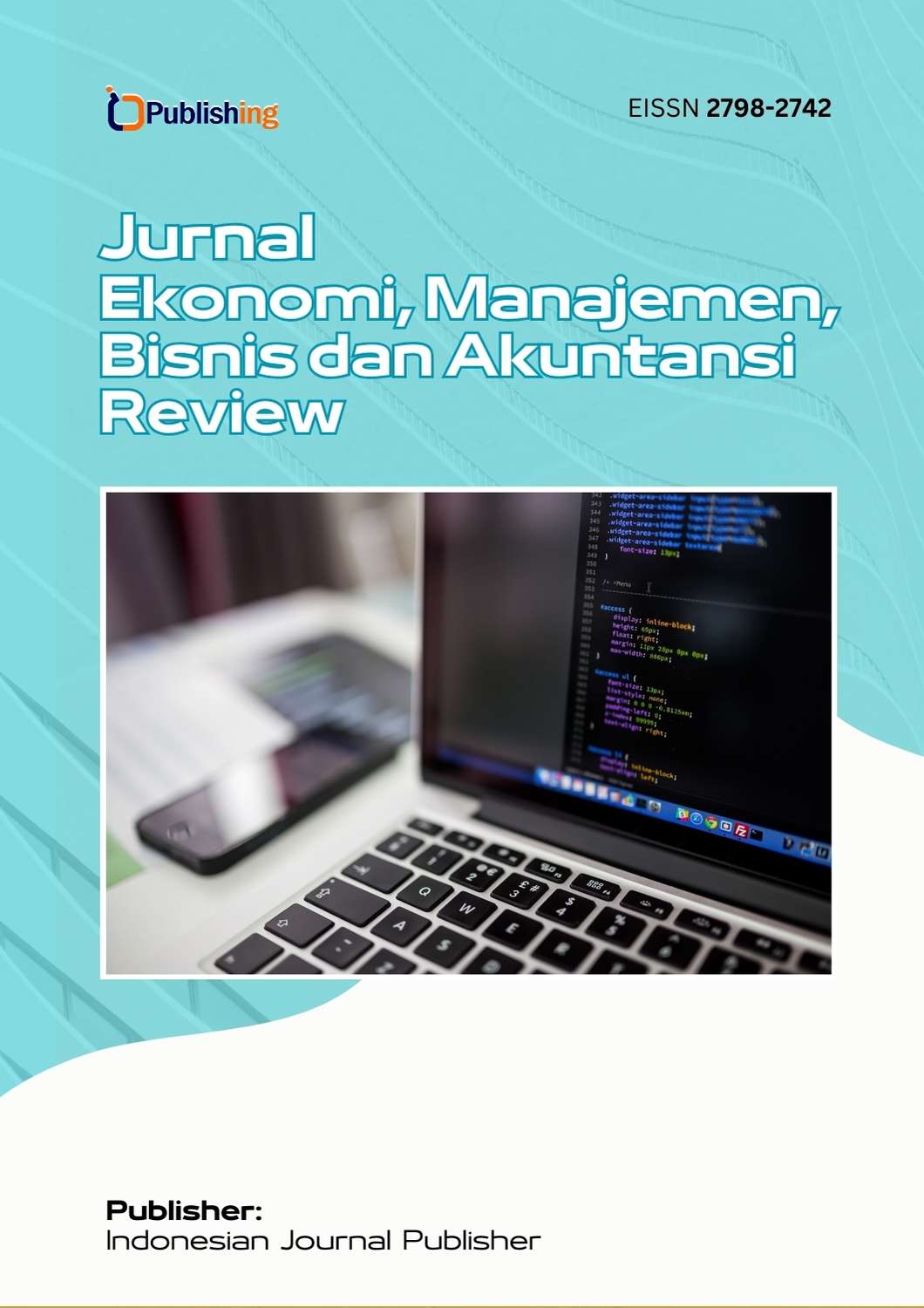Driving Employee Digital Performance: Exploring The Mediating Role Of Employee Dynamic Capability In The Context Of Hi-Hrmp And Organizational Learning At Pt Astra Daihatsu Motor In Sunter & Karawang
DOI:
https://doi.org/10.53697/emba.v4i2.2207Keywords:
HI-HRMP, Organizational Learning, Employee Dynamic Capability, Employee Digital PerformanceAbstract
This study investigates the relationship of High Involvement Human Resources Management Practice (HI-HRMP), Organizational Learning, Employee Dynamic Capability and Employee Digital Performance. The primary objective is aiming to explore how Employee Dynamic Capability mediates the effect of HI-HRMP and Organizational Learning on Employee Digital Performance. The research focuses on employees of PT Astra Daihatsu Motor in Sunter and Karawang, involving a sample of 185 respondents selected using purposive sampling from company’s workforce in both location. The research employs a quantitative approach, utilizing a questionnaire to collect cross-sectional data. Data analysis includes descriptive statistics to summarize the sample characteristics and mean, the Sobel test to examine the mediating effect of employee dynamic capability, and Structural Equation Modeling (SEM) to analyze the relationships between variables. The finding shows that HI-HRMP has a direct positive and significant effect on employee digital performance but does not influence on employee dynamic capability. Thus, dynamic capability fails to mediate the relationship between HI-HRMP and employee digital performance. Meanwhile, organizational learning significantly influence employee digital performance, both directly or indirect and through employee dynamic capability as a partially mediating variable.
References
Barney, J. B. (2001). Resource-based theories of competitive advantage: A ten-year retrospective on the resource-based view. Journal of Management, 27(6), 643–650. https://doi.org/10.1177/014920630102700602
Borah, S., Singh, S., & Sharma, D. (2022). High-involvement HRM practices and organizational performance: The mediating role of employee engagement. Journal of Business Research, 134, 405-414. https://doi.org/10.1016/j.jbusres.2021.07.048
Chuang, S. H., Chiao, Y. C., & Lin, C. L. (2019). Organizational Learning, dynamic capabilities, and innovation: The mediating effect of digital transformation. Technology Analysis & Strategic Management, 31(12), 1440-1452. https://doi.org/10.1080/09537325.2019.1650537
CCOO. (2018). Digital Transformation in the Automotive Industry: The Role of Digital Technologies in Vehicle Value. Report by the Confederation of Committees of Automotive Operators.
Iqbal, Q., & Ahmad, N. H. (2021). Sustainable development: The colors of sustainable leadership in learning organization. Sustainable Development, 29(2), 108–119. https://doi.org/10.1002/sd.2135
Parida, V., Sjödin, D., Lenka, S., & Wincent, J. (2019). Developing digital service innovations: The role of dynamic capabilities in service ecosystems. Journal of Business Research, 104, 530-543. https://doi.org/10.1016/j.jbusres.2019.02.050
Richter, A. (2020). Digital work design: Exploring the role of technology in employee performance and organizational outcomes. Journal of Organizational Behavior, 41(6), 563-579. https://doi.org/10.1002/job.2453
Rubel, M. R. B., Kee, D. M. H., & Rimi, N. N. (2023). Promoting technology innovation performance through high involvement HRM, technology adaptation and innovativeness. Business Process Management Journal, 29(5), 1277–1302. https://doi.org/10.1108/BPMJ-10-2022-0526
Rubel, M. R. B., Kee, D. M. H., Rimi, N. N., & Yusoff, Y. M. (2017). Adapting technology: Effect of high-involvement HRM and organisational trust. Behaviour & Information Technology, 36(3), 281–293. https://doi.org/10.1080/0144929X.2016.1222552
Rusilowati, I. (2022). Organizational Learning as a strategy for adapting to digital transformation in Indonesian industries. Journal of Organizational Change Management, 35(2), 273-287. https://doi.org/10.1108/JOCM-07-2021-0202
Shin, D., & Konrad, A. M. (2020). High-involvement work systems and digital collaboration: Enhancing employee problem-solving through technology integration. Journal of Organizational Effectiveness: People and Performance, 7(3), 236-254. https://doi.org/10.1108/JOEPP-06-2020-0037
Sugiyono. (2019). Metode Penelitian Kuantitatif, Kualitatif, dan R&D (25th ed.). Bandung : Alfabeta.
Teece, D. J., Pisano, G., & Shuen, A. (1997). Dynamic capabilities and strategic management. Strategic Management Journal, 18(7), 509-533. https://doi.org/10.1002/(SICI)1097-0266(199707)18:7<509::AID-SMJ882>3.0.CO;2-Z
Vial, G. (2019). Understanding digital transformation: A review and a research agenda. The Journal of Strategic Information Systems, 28(2), 118-144. https://doi.org/10.1016/j.jsis.2019.01.003
Wang, G., Mansor, Z. D., & Leong, Y. C. (2024). Unlocking digital performance: Exploring the mediating role of employee competitive attitudes, behaviors, and dynamic capabilities in Chinese SMEs under high-involvement human resource management practice. Heliyon, 10, e36026. https://doi.org/10.1016/j.heliyon.2024.e36026
Wang, G., Niu, Y., Mansor, Z. D., Leong, Y. C., & Yan, Z. (2024b). Unlocking digital potential: Exploring the drivers of Employee Dynamic Capability on Employee Digital Performance in Chinese SMEs—Moderation effect of competitive climate. Heliyon, 10(4), e25583. https://doi.org/10.1016/j.heliyon.2024.e25583
Wang, G., Niu, Y., Mansor, Z. D., Leong, Y. C., & Yan, Z. (2024c). Linking digital leadership and Employee Digital Performance in SMEs in China: The chain-mediating role of high-involvement human resource management practice and Employee Dynamic Capability. Heliyon, 10, e3606. https://doi.org/10.1016/j.heliyon.2024.e36026
Zhang, Y., Li, H., & Luo, X. (2022). Employee dynamic capabilities and digital transformation in the automotive industry: A case study of China. Journal of Business Research, 128, 479-490. https://doi.org/10.1016/j.jbusres.2021.12.054
Downloads
Published
How to Cite
Issue
Section
License
Copyright (c) 2025 Reffi Nurhardiyanti, Tiarapuspa

This work is licensed under a Creative Commons Attribution 4.0 International License.













